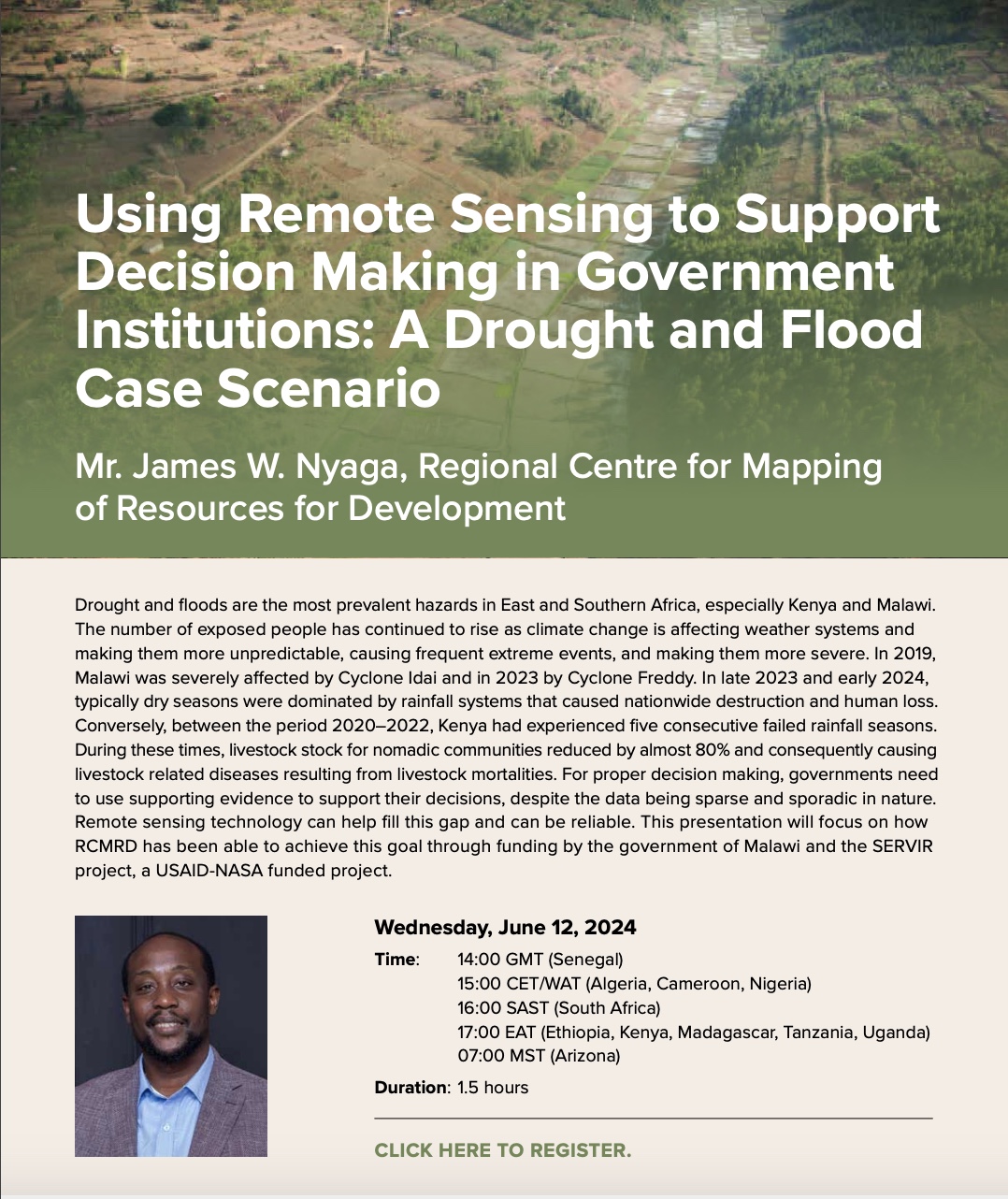Drought and floods are the most prevalent hazards in East and Southern Africa, especially Kenya and Malawi.
The number of exposed people has continued to rise as climate change is affecting weather systems and
making them more unpredictable, causing frequent extreme events, and making them more severe. In 2019,
Malawi was severely affected by Cyclone Idai and in 2023 by Cyclone Freddy. In late 2023 and early 2024,
typically dry seasons were dominated by rainfall systems that caused nationwide destruction and human loss.
Conversely, between the period 2020–2022, Kenya had experienced five consecutive failed rainfall seasons.
During these times, livestock stock for nomadic communities reduced by almost 80% and consequently causing
livestock related diseases resulting from livestock mortalities. For proper decision making, governments need
to use supporting evidence to support their decisions, despite the data being sparse and sporadic in nature.
Remote sensing technology can help fill this gap and can be reliable. This presentation will focus on how
RCMRD has been able to achieve this goal through funding by the government of Malawi and the SERVIR
project, a USAID-NASA funded project.


